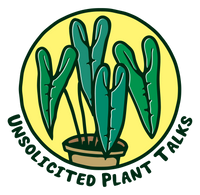How to Root Hoya Cuttings

Table of Contents
- Rooting a Hoya Plant
- Get Potting
- Maintaining Moisture
- Creating the Ideal Growing Conditions
- Humidity
- Warmth
- Adequate Light
- Wrap Up
The delightful Hoya, also known as wax plant or wax flower, is a popular and desirable house plant that is refreshingly easy to grow and has charming, exotic flowers with an adorable scent.
Hoya is part of the species epiphytes, meaning they primarily grow on other species of plants while drawing moisture and nutrients from the surrounding air.
Hoya plant varieties are abundant, with at least a few hundred Hoya versions available, although some believe there may be up to 800 in existence.
Rooting a Hoya Plant
One of the more common questions we receive about this intriguing, beautiful plant is how to root them, and you might be relieved to know that rooting a Hoya is almost quite effortless compared to many other plants.
So that is what we will be tackling in this short guide - the best methods for rooting your Hoya successfully.
The first thing you should know is that you can root Hoya in the medium of your choosing. Just take your pick from perlite, water, clay aggregate (leca), soil, or moss. Coco husk is not only a great option but also happens to be our personal favorite!
Each of those methods should produce identical results during the general propagation. That said, moss can sometimes prove a little problematic as it binds to the roots, leading to potential rot later on.
Before we get to that, let's backtrack a little and take things step by step!

Begin your Hoya propagation by selecting a lovely, healthy stem section, making sure that the chosen stem includes at least one node (that's almost essential for successful rooting). A longer stem segment is usually better as it provides more flexibility and increases the likelihood of successful rooting, even if part of the stem begins to rot.
After cutting the stem, it’s important to give it time to heal before introducing it to your growth medium: a few hours should do it, allowing for the cut end to dry and form a callous. This will prevent rotting when the cutting comes into contact with moisture in the rooting medium!
Get Potting
As noted, you can use a wide range of mediums, but planting your Hoya cuttings directly in a coco husk mixture is usually the most convenient and seems to be less stressful for the plants.
Select the smallest pots available for planting the cuttings, as they stay in these pots until the roots have fully developed and filled the pot. Hopefully, this will reduce the need to re-pot and change the medium later, minimizing stress on the plant in the process. This way, the cutting adapts more quickly and begins to show new growth sooner.
However, it is worth noting that some varieties with softer leaves (like the Hoya lockii, for example) may prefer the medium to be more consistently moist in comparison to others.
Maintaining Moisture
Once the cuttings are in their pots, make sure they are well-watered, and then monitor the moisture level of the soil carefully during this early phase. The goal is to keep the soil consistently moist – not too damp and not too dry - as consistent moisture is a huge factor in encouraging healthy root growth.
Once you begin to notice new growth and the roots are well established, you can start allowing the soil to dry slightly between waterings. This more cautious, gradual approach encourages stronger root development going forward.
Creating the Ideal Growing Conditions
For Hoya cuttings to root effectively, there are three important environmental factors to be aware of.
- Sufficient Humidity: Hoyas thrive in a humid environment, which aids in root development.
- Appropriate Warmth: A warm setting is important for the rooting process, encouraging better growth.
- Adequate Lighting: Proper light is incredibly important for the health and growth of the Hoya.
Keep an eye on these three conditions, and you will encourage successful rooting of Hoyas throughout the year, and not just in the warmer months of spring and summer!

Humidity
You can place the cuttings in clear storage boxes to maintain high humidity, leaving the lid partially open for ventilation, before removing it briefly every other day during moisture checks.
Warmth
Place the boxes on heating mats for warmth to mirror natural conditions, synced with light exposure. Day-night temperature fluctuations will be naturally beneficial for the cuttings.
Adequate Light
Finally, Hoyas require a good amount of light for the best growth. If natural sunlight is insufficient, you can consider using grow lights. Just position the Hoyas carefully! Weaker LED strips work best when they are close to the plants, while stronger lights should be placed at a safe distance to prevent overheating or damage.
Wrap Up
The only thing left to do now is to enjoy the bloom of these marvelous little plants. If you need further tips and tricks with all things Hoya, check out our blog for an extensive range of posts. You might notice we have a soft spot for these special plants and happen to know a thing or two about them.
We also have a wonderful collection available in our Hoya store, from the much-loved Hoya wayetii to the rarer, more sought-after Hoya rintzii and much more. You might even find a bargain or two - we are known for our pretty generous discounts here at Unsolicited Plant Talks, so don't forget to hop on over and have a look!





